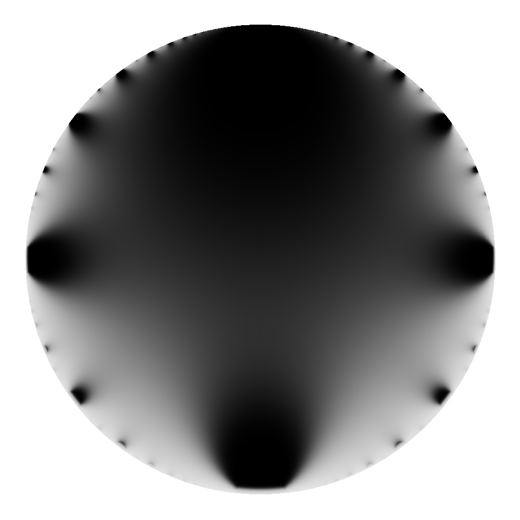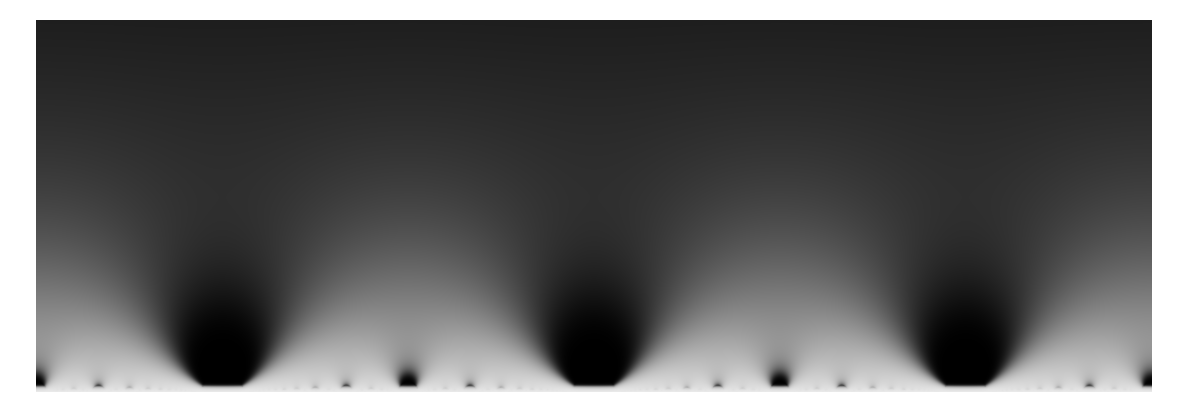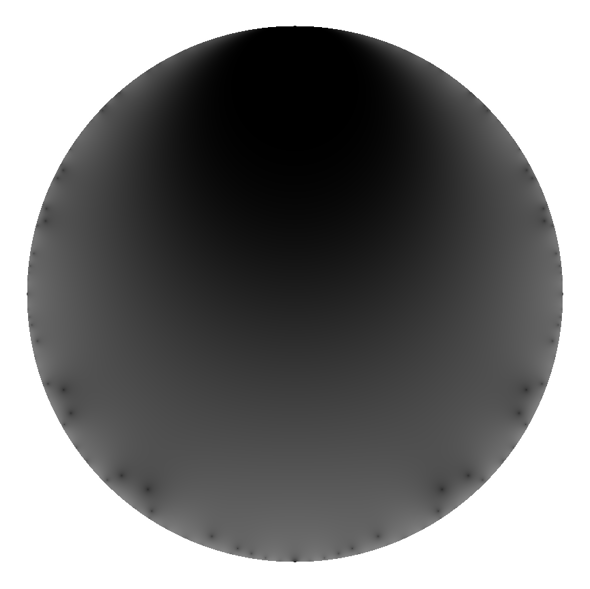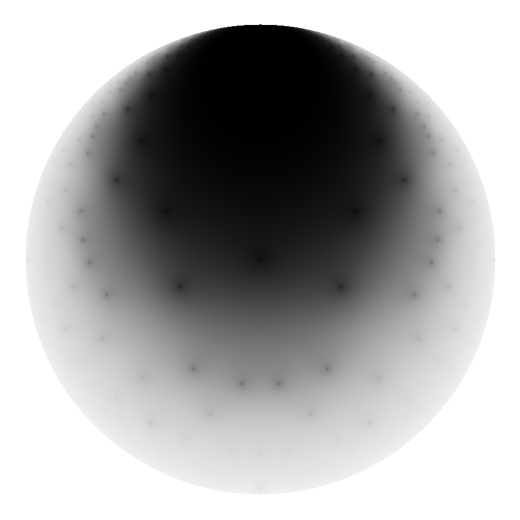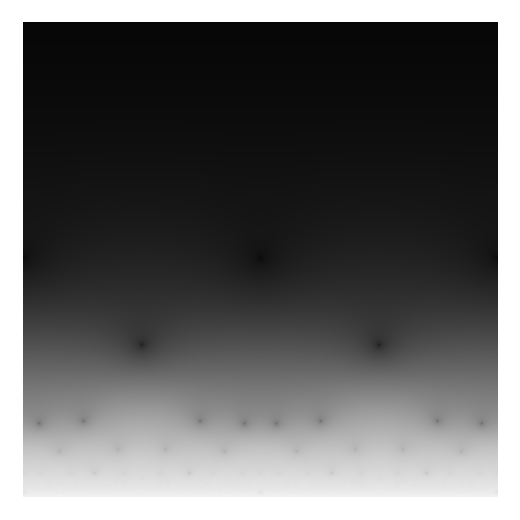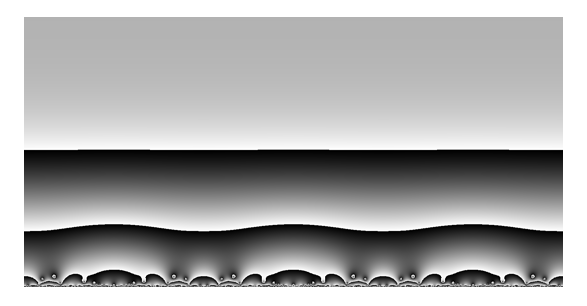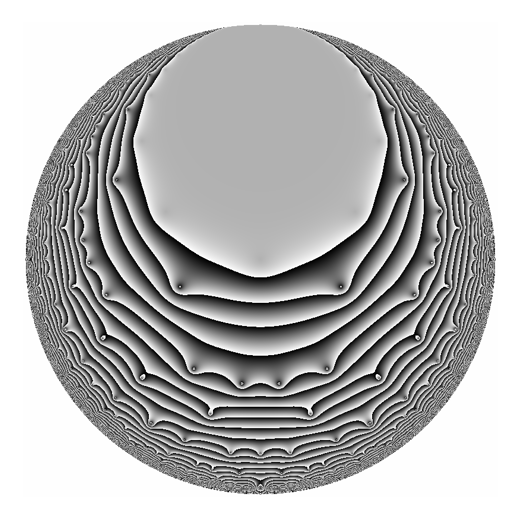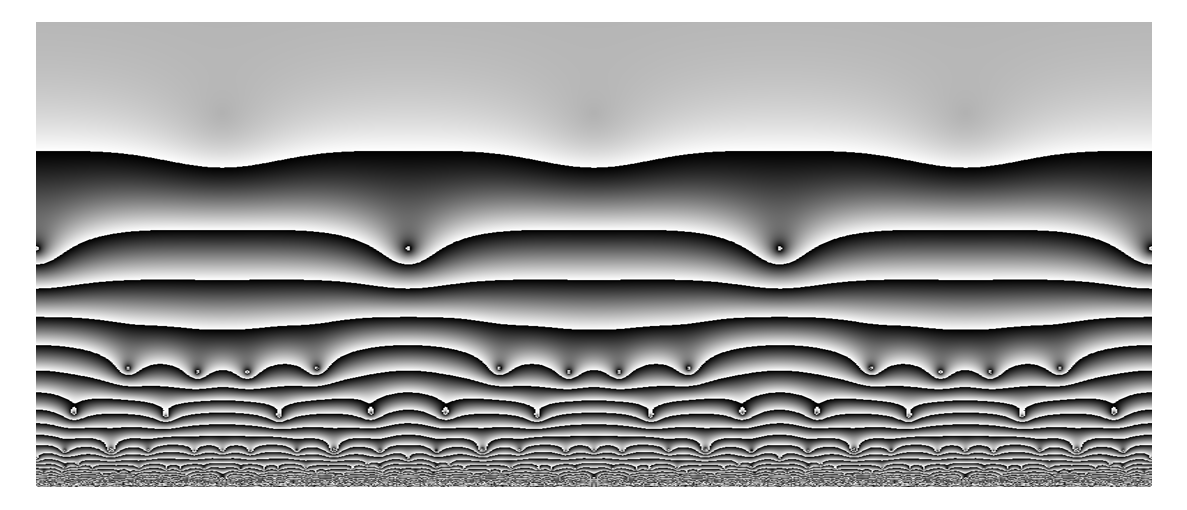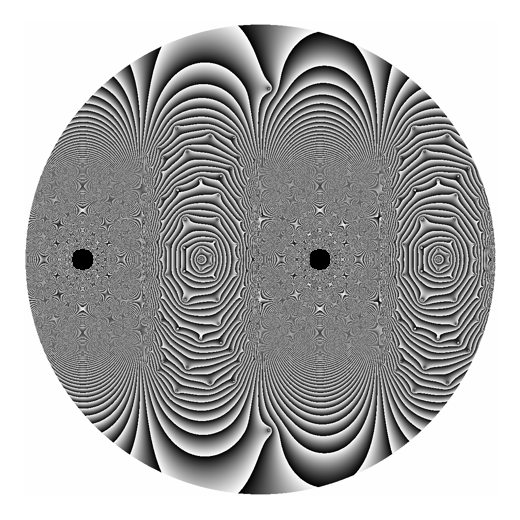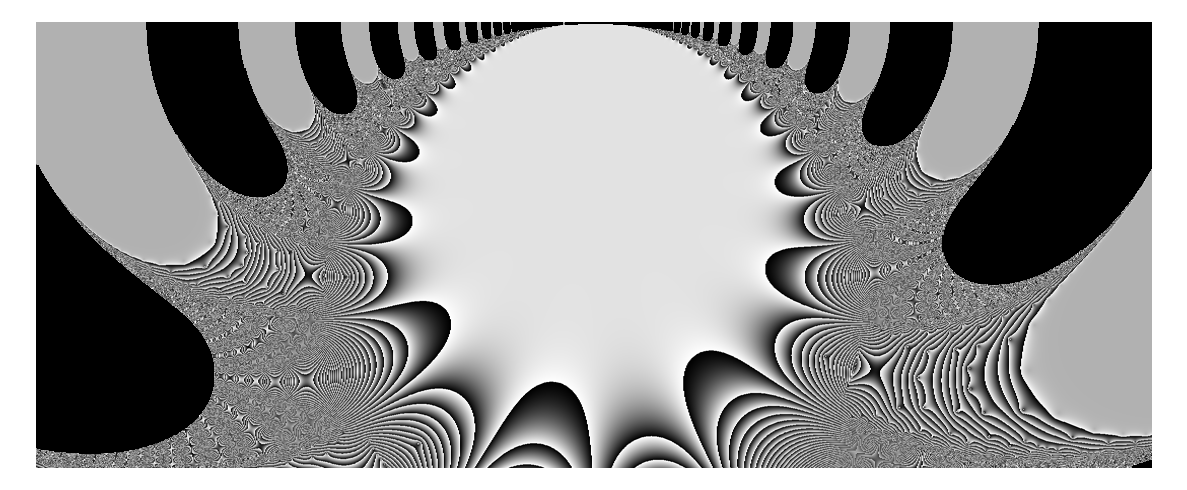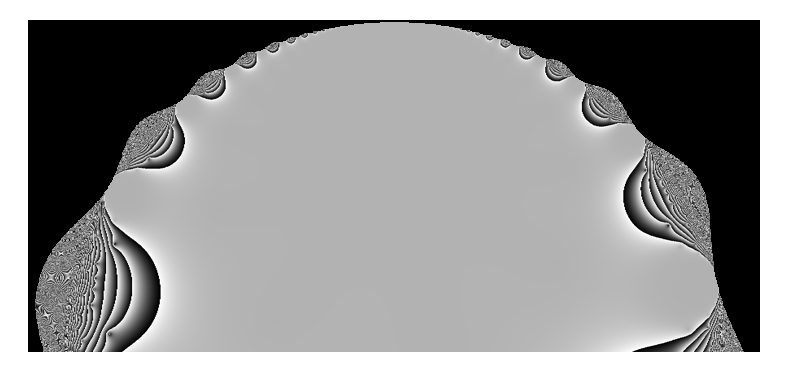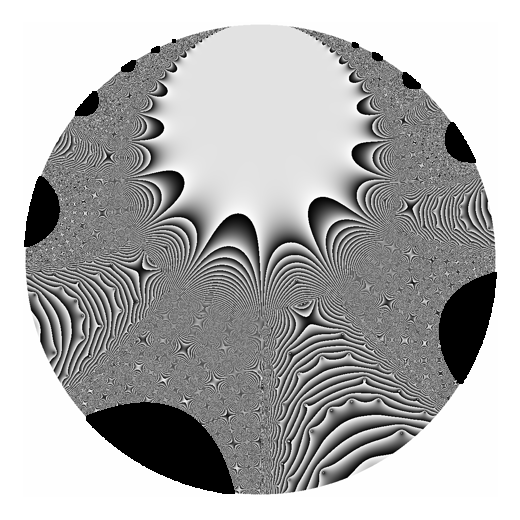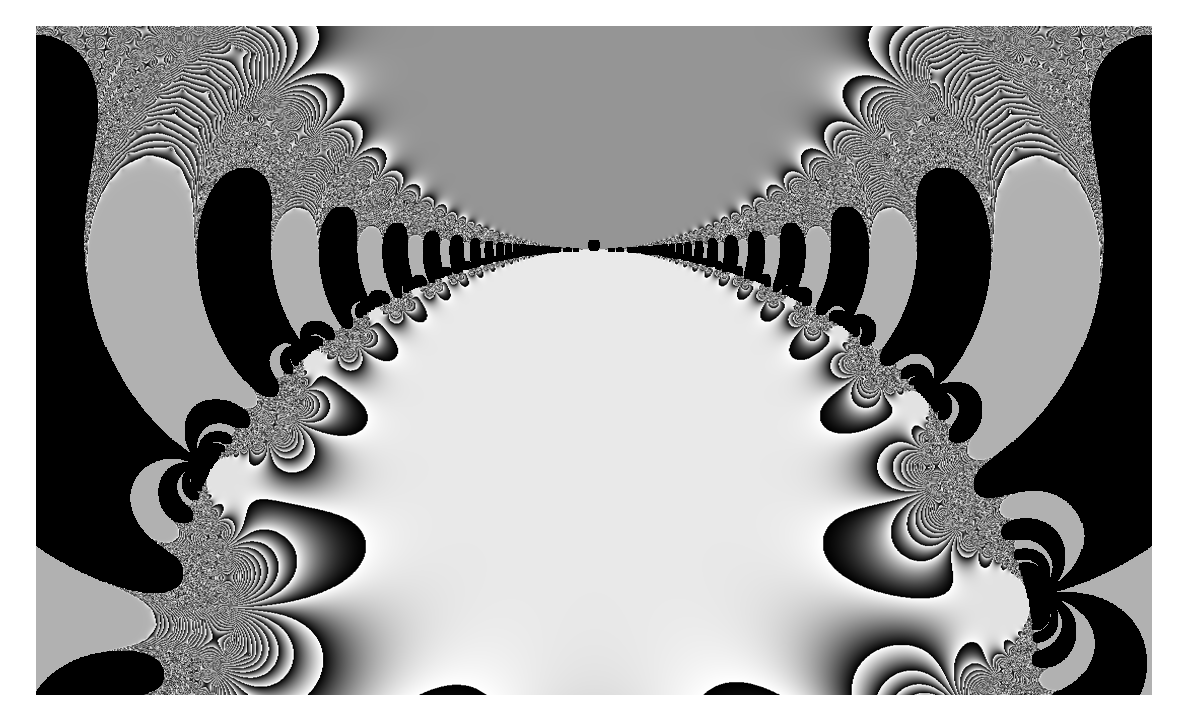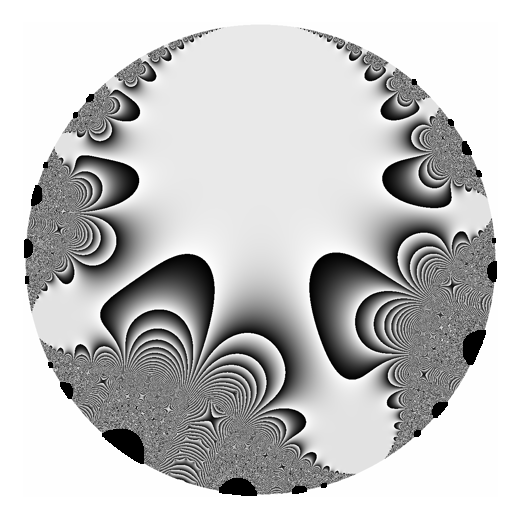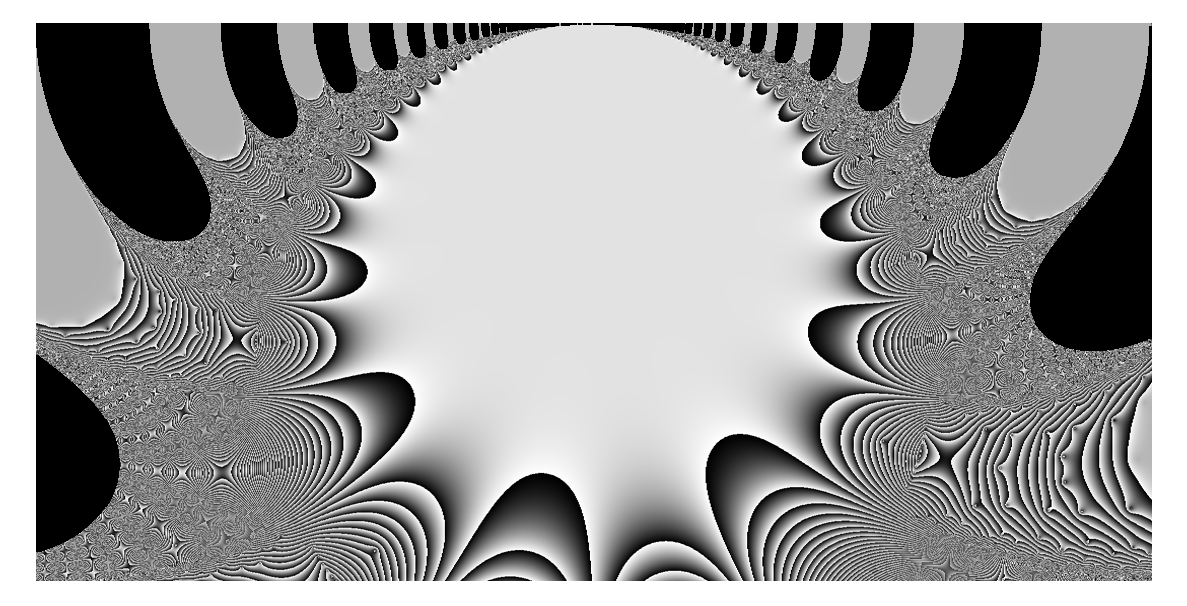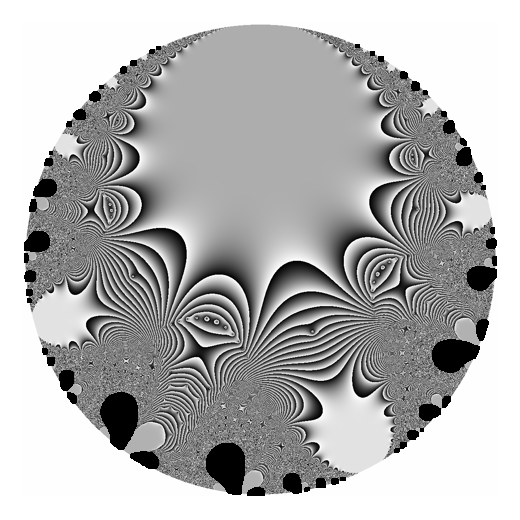Modular Forms
My PhD, and most of my research, is centered on the topic of modular forms. Recently I began to study their visualizations.
A modular form \(f(z)\) on \(\mathrm{GL}(2)(\mathbb{R})\) is a complex-valued function that is highly self-symmetric. This can be made rigorous, but the idea is that the values of the function in one area are essentially related to the values in many other areas.
In pictures, this manifests as patterns that seem to repeat, or nearly repeat.
There is a profound challenge to visualizing these objects. They are naturally four dimensional. How are we to see one?
Mathematicians frequently use a combination of color and brightness to represent the two dimensions of the output of a complex-valued function. The result can be dazzling, but often the result is very noisy.
Here I deliberately avoid color. I do this not because it's better, but because it's already enough to see the self-symmetry. It's already beautiful.
Even without color, it is possible to draw attention to self-similarity. By cycling through shades of grey, we produce a graduated contour map. Shapes emerge, peaks, troughs, valleys --- or perhaps layers of a conch, or rippled sand in a desert.
Each modular form has a natural domain: the upper half plane, consisting of pairs \((x, y)\) of real numbers with \(y > 0\) (or as the complex numbers \(x + iy\) with \(y > 0\)). In half of the images here, I map the upper half plane to a disk, and instead show the disk.
The map I use from the plane to the disk is distinguished. Circles and straight lines in the plane appear as different circles and straight lines in the disk. The line \(y = 0\) in the plane is mapped to the circle \(x^2 + y^2 = 1\), and the line \(x = 0\) in the plane is mapped to itself.
Thus the bottom center of two images will appear very similar, but the similarities will become more and more distorted away from the bottom center. But both are honest.
By choosing different maps that are less truthful, we see different views of the modular form. This is like looking at a picture taken from a fish-eye lens.
